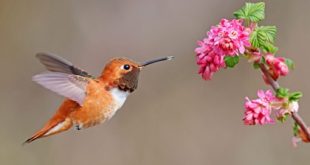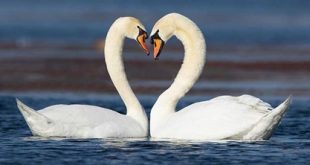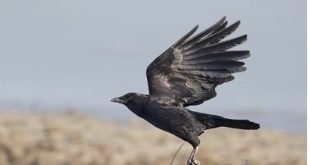Mynah birds are fascinating members of the starling family, celebrated for their intelligence, adaptability, and remarkable ability to mimic human speech. These medium-sized birds possess distinct anatomical features that aid in their survival, communication, and interaction with the environment. Below, we explore the various body parts of a mynah bird and their functions in detail.
A Body Parts Of Mynah

1. Head
The head of the mynah bird is a crucial part of its anatomy, housing vital sensory organs and facilitating communication.
- Eyes: Positioned on the sides of their head, the mynah’s eyes provide a wide field of vision, helping them detect predators and locate food. They have excellent visual acuity and color vision, which is essential for identifying ripe fruits or spotting insects.
- Beak: The beak is sharp, curved, and relatively short. Mynahs use their beak to pick up food, groom their feathers, and construct nests. It also serves as a tool for defense and social interactions.
- Ears: Located behind the eyes, the mynah bird’s ears are covered by feathers to protect them from debris. Their acute sense of hearing aids in detecting calls from their mates or warnings of potential threats.
- Crest or Feather Tufts: Some mynah species have feather tufts on their heads, which they can raise or lower. This feature is often used for communication, displaying aggression or courtship.
2. Neck
The neck of the mynah bird is flexible and allows them to move their head in various directions. This flexibility is critical for:
- Grooming and preening feathers to maintain hygiene.
- Feeding, as they need to twist their heads to pick food from the ground or branches.
- Enhancing their field of vision by adjusting head angles.
3. Wings
The wings of the mynah bird are one of its most prominent features, enabling flight and mobility.
- Flight Feathers: These long, sturdy feathers provide the lift and thrust needed for flight. They are essential for escaping predators, migrating, and exploring territories.
- Secondary Feathers: Located closer to the bird’s body, these feathers help in maintaining stability during flight.
- Wing Muscles: Strong muscles attached to the wings allow for sustained flight and quick takeoffs.
4. Body
The mynah bird’s streamlined body supports flight and houses essential organs.
- Feathers: The feathers provide insulation, waterproofing, and camouflage. Their coloration can also play a role in mating displays and species identification.
- Skin: Beneath the feathers, the skin protects internal organs and acts as a barrier against pathogens.
- Muscles: The body’s musculature, particularly the chest muscles, provides the power for wing movement.
- Skeleton: Lightweight yet sturdy, the bird’s skeleton supports its body while being optimized for flight.
5. Legs and Feet
The legs and feet of a mynah bird are robust and adapted for various functions.
- Legs: The legs are muscular and allow the mynah to walk, hop, or perch for extended periods. Their mobility helps them forage on the ground and balance on tree branches.
- Feet: Mynahs have three forward-facing toes and one backward-facing toe. This arrangement provides a strong grip, enabling them to cling to branches, wires, or even the sides of trees.
- Claws: The claws are sharp and curved, aiding in grasping food, climbing, and defending against predators.
6. Tail
The tail of a mynah bird serves multiple purposes.
- Steering in Flight: The tail feathers help in changing direction and maintaining balance during flight.
- Braking: By spreading their tail feathers, mynahs can slow down and land safely.
- Communication: Tail movements and displays can convey messages to other birds, such as warning signals or mating cues.
7. Respiratory System
The respiratory system of a mynah bird is highly efficient, enabling sustained flight and vocalization.
- Nostrils: Located at the base of the beak, the nostrils allow for air intake.
- Trachea and Syrinx: The trachea leads to the syrinx, a specialized vocal organ. Mynahs use their syrinx to produce complex sounds and mimic human speech.
- Lungs and Air Sacs: The bird’s lungs are supported by air sacs that store and circulate air, ensuring a continuous supply of oxygen during flight.
8. Digestive System
The mynah bird’s digestive system is adapted for an omnivorous diet.
- Beak: Used to pick and consume food.
- Crop: A storage pouch in the esophagus where food is temporarily held before digestion.
- Stomach: The stomach is divided into the proventriculus (for chemical digestion) and the gizzard (for mechanical digestion).
- Intestines: The intestines absorb nutrients from the digested food.
- Cloaca: Waste products are excreted through the cloaca.
9. Vocal Apparatus
Mynah birds are renowned for their vocal abilities, which are made possible by their specialized anatomy.
- Syrinx: The syrinx is a highly developed vocal organ located at the base of the trachea. It allows mynahs to produce a wide range of sounds, from natural calls to mimicking human speech.
- Tongue: The flexible tongue helps in shaping sounds and articulation.
- Brain: A well-developed brain enables them to learn and replicate complex sounds.
10. Reproductive System
The reproductive system of mynah birds ensures the survival of their species.
- Cloaca: Both male and female mynahs have a cloaca for reproduction.
- Eggs: Females lay eggs in nests, and both parents often share the responsibility of incubating the eggs and feeding the chicks.
- Nesting Behavior: Mynahs build nests using twigs, leaves, and other materials to protect their eggs and young.
11. Behavioral Adaptations and Body Movements
- Preening: Using their beaks, mynahs clean and align their feathers, maintaining their insulation and waterproofing properties.
- Social Displays: Movements of the wings, tail, and crest feathers are often used for communication within flocks.
- Foraging: Mynahs use their beaks and feet to dig into the soil or manipulate objects while searching for food.
Conclusion
The mynah bird’s body is a marvel of evolution, with each part playing a specific role in its survival and interaction with the environment. From their sharp beaks and agile wings to their vocal organs and intelligent brains, mynahs exhibit a harmonious integration of form and function. By understanding their anatomy, we can better appreciate the adaptability and uniqueness of these captivating birds.


